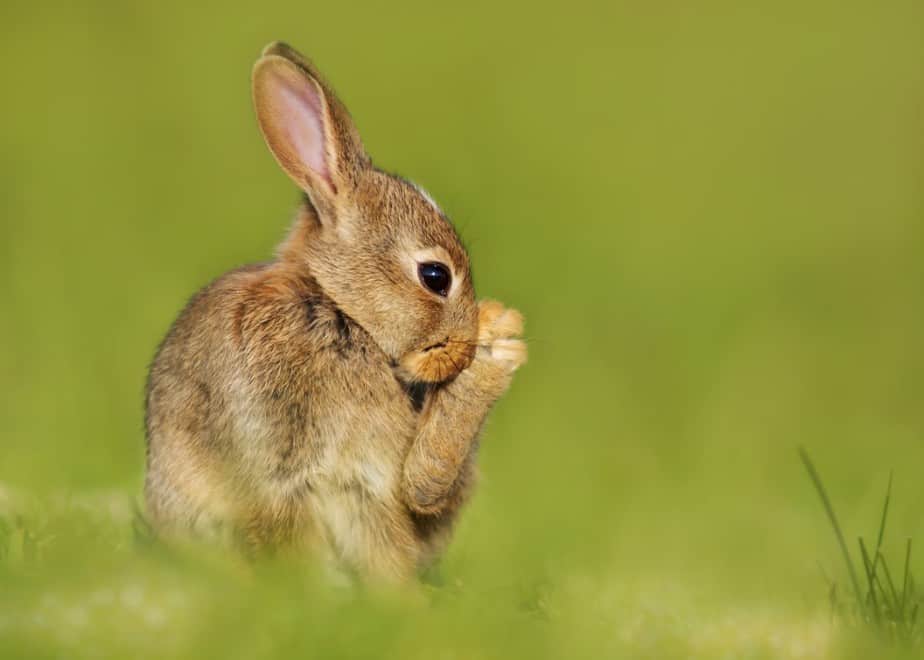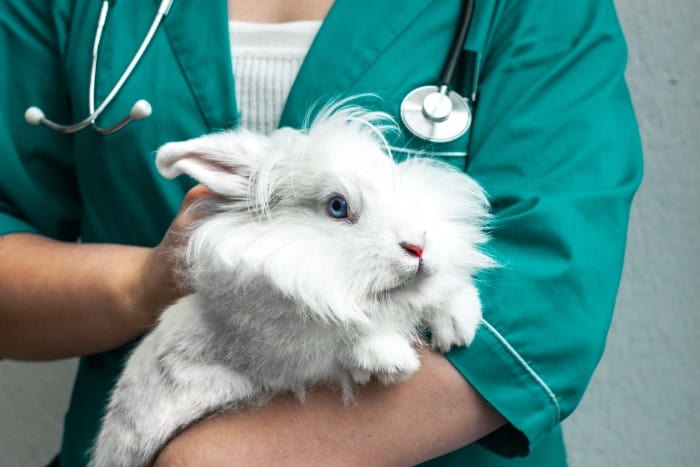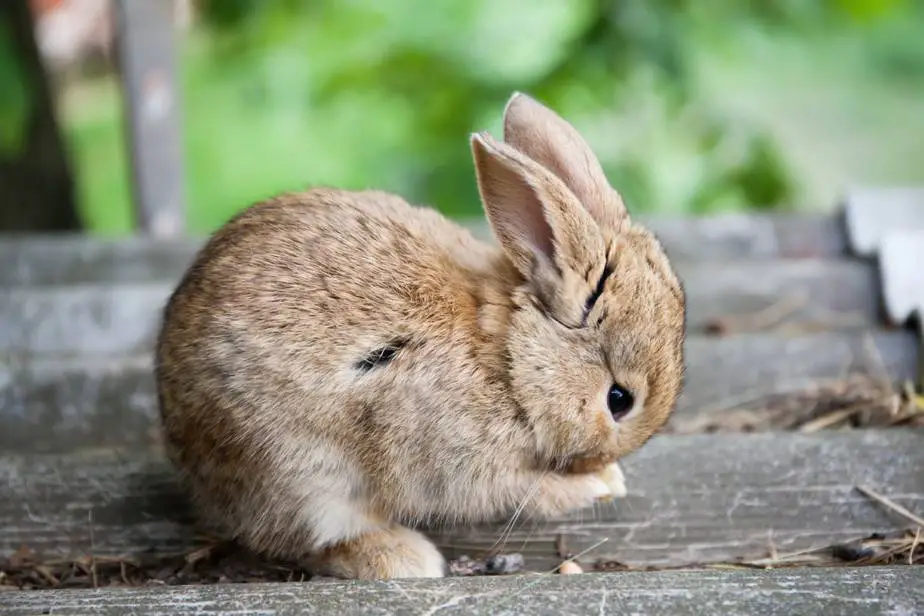Although many mammals possess very similar anatomical characteristics, it is widely known that each one of these traits serves a different purpose in each species; this is the case with the paw pads.
In some animals, paw pads may help them run, or in others they may have a different function, such as jumping. But what about bunnies? Do rabbits have paw pads?
The answer is no. Rabbits are the only land mammals that do not have paw pads. Our beloved friends never cease to amaze us! Having no paw pads is one of the curiosities about rabbits that many people do not know.
What Are Paw Pads?
Paw pads are bald oval areas at the sole of mammals’ paws composed of thick keratinized epithelium layers. This epithelium covers a layer of fatty and collagenous tissue found under the skin.
Paw pads usually consist of:
- Digital pads that are below the toes
- A metacarpal pad at the center of the animal’s paw
- A carpal pad that can be seen in the place where the wrist is supposed to be
Some animals may have paw pads on all four legs; others have them only on their front legs. It all depends on their genetic characteristics and their adaptation to the environment.
What Is the Role of Paw Pads?
Paw pads are adapted to the characteristics of each species and serve different functions, among which we find the following:
- Their primary purpose is to cushion the foot. Paw pads act like a shock absorber that protects the bones, tendons, and feet ligaments.
- They protect the surface of the paw from the surface of the ground it contacts, allowing the animal to walk on rough surfaces with minimal chance of injury.
- Provide the animal with more excellent traction, allowing it to increase its speed when running.
- Help the animal maintain its balance and stability of its body, especially when walking or running on slippery or unstable surfaces.
Each species has developed its paw pads to fulfill a specific function. Let us take cats as an example. In cats specifically, paw pads allow them to walk without being detected, since the paw pads’ cushion helps absorb sound.

Why Do Rabbits Lack Paw Pads?
As we have seen, paw pads fulfill different functions, but rabbits lack this physical characteristic. Just because they do not have paw pads doesn’t mean they have a defect; on the contrary, bunnies have evolved to adapt to their environment and the way they move. Their legs became more durable and robust instead of speedy like other mammals.
Most mammals walk and run in two ways: they can be digitigrades or plantigrades. That is, they can step on the soles of their feet or their toes. Rabbits can use both forms of locomotion, but they mostly use the digitigrade form when running.
Also, instead of having paw pads, rabbits have a dense cover of fur on their legs’ soles, which provides the necessary cushioning to protect the structures that make up their feet. It is possible that changing the paw pads for a dense layer of fur has resulted in these animals evolving to develop greater agility and mobility in their natural environment.
The Problem of Sore Hocks in Rabbits
Sometimes not having paw pads can pose significant difficulties for the rabbits. Sore hocks are among the most common problems in pet rabbits and one of the most overlooked because many rabbit owners, not knowing that their pets lack paw pads, tend to confuse this condition with these structures.
What Are Sore Hocks?
Sore Hock is an inflammatory condition that affects the bunnies’ paws due to friction on hard, rough surfaces. Rabbits can develop a sore hock on any of their legs, but it is usually more common on the hind legs.
These lesions are usually very painful, and the problem can worsen when the lesions open. If the lesions start to bleed, at this stage, they are prone to infection by bacteria present in the soil, urine, and excrements.
The condition is also known as ulcerative pododermatitis. This condition can be fatal if left untreated.
Symptoms
Rabbits with sore hocks usually remain inactive to avoid putting weight on the affected foot. This condition significantly affects and diminishes the well-being and quality of life of the animal. Rabbits tend to move less or more slowly than usual.
We can suspect that a rabbit is suffering from sore hocks if we observe that the animal avoids doing any activity like playing and eating and would prefer to sit and not move. For this reason, you must check its paws periodically.
How Do You Determine if a Rabbit Has Sore Hocks?
Sore hocks develop in stages that can be progressive if they are not attended to in time or correctly. It is essential to learn to detect these stages so that you can take necessary action immediately. These are the main stages of sore hocks:
- Bald patches: this is the first stage of sore hocks. These bald patches are usually more common on the hind legs as the rabbit carries most of its weight on its hind feet. We can also distinguish them because they are rounded areas that usually have pink coloring. At this stage, it is advisable to use balms and ointments to prevent further damage.
- Inflammation: Inflammation develops when bald patches are not appropriately treated. Remember that the rabbit’s skin is exceptionally delicate, and any sign of inflammation can quickly worsen the condition. So, at this stage, you must take your pet rabbit to a vet immediately so that he can prescribe the appropriate treatment to avoid the rabbit’s condition worsening.
- Infection: This stage characterizes by redness, swelling, painful ulcers with pus production, and bleeding of the lesions. Bunnies may also develop abscesses in their affected paw. These lesions are challenging to heal independently and need specific medications such as antibiotics, analgesics, and anti-inflammatories. An untreated infection can lead to the tendon inflammation, infection of the bone marrow, and joint tissue swelling. In severe cases, the condition may require amputation of the limb.
The bacterium that most commonly infects lesions causing pododermatitis is Staphylococcus aureus. This bacterium is very contagious, so you may want to keep your infected bunny apart from healthy rabbits.
A rabbit that avoids doing any activity like playing and eating and would prefer to sit and not move could be suffering from sore hocks. For this reason, you must check its paws periodically.

What Are the Causes of Sore Hocks?
Many causes can trigger pododermatitis. Among them, we find the following:
- The animal spends too much time inside its cage without having the opportunity to move freely and perform any exercise. Therefore, the rabbit will remain seated in the same position for longer, which causes more significant pressure on its hocks.
- Inappropriate flooring: Wired floorings can cause many sore hock problems in rabbits, as they are very lacerating. Also, wood, carpet, tile, linoleum, and cement floorings can be problematic for rabbits.
- Overweight rabbits and larger breeds: Overweight causes the rabbit to sit incorrectly or put extra pressure on its paws. Giant rabbit breeds are also more likely to present this problem due to their weight.
- Skeletal problems: Rabbits suffering from diseases such as arthritis can also develop sore hucks because many tend to adopt unnatural postures.
- Certain breeds of rabbits that lack much fur in their paws, as is the case with Rex rabbits and Holland loops, are also more prone to develop sore hocks.
As we have seen, we can keep this condition under control by making small adjustments to our rabbits’ environment and routine. It is always easier to prevent than to regret.
How to Prevent Your Bunny from Developing Sore Hocks
Regardless of the causes, the most important thing is to detect the problem in time to prevent the progression of the disease. Here is what you can do:
- Appropriate flooring: The important thing is to provide flooring that is quite soft and does not lacerate its legs. For this purpose, you can use memory foam pads or fleece.
- Provide a space where your pet can run, play, and move around freely.
- Keep your rabbit cage and litter box clean: In this way, you will avoid the proliferation of bacteria, which can cause infections. Avoid humidity and the accumulation of dirt on the floor. Ideally, they should also have a base or bed of straw, which can be changed three times a week as this is a much softer and more malleable material which adapts perfectly to the needs of the rabbits.
- Handling of overweight with diets under veterinary supervision and increased physical activity.
- Check your rabbit’s legs periodically and visit your vet to keep your pet up to date on its check-ups.
While we do not often think about our rabbits’ paws, many misconceptions about them can put our best friend’s health at risk. People often mistake sore hocks for paw pads when they become inflamed. However, sore hocks are a common but potentially damaging ailment that all owners should keep an eye on.
If nature has determined that our furry friends have evolved not to have paw pads, it is just because they do not need them, but it is up to us to prevent the lack of this characteristic from becoming a problem for our pet rabbit.

